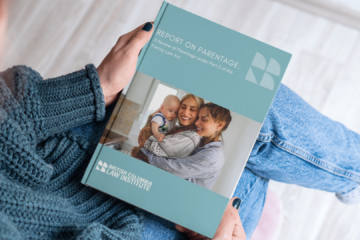Age Discrimination and the Human Rights Process in British Columbia
March 10, 2022
BY Nicole Freeman, Monika Steger, and Alison Wilkinson
Introduction
This is the first of a three-part series discussing age discrimination and older people. This first post will focus on the human rights process and age discrimination generally. The second post looks at age discrimination in employment settings. The final post reviews other settings where age related discrimination occurs.
This blog post:
- Defines age discrimination;
- Explores the basic human rights process;
- Discusses how age discrimination fits into this process.
Age Discrimination
Age discrimination occurs when someone is treated badly because of their age. This can occur at any stage of life and is not only related to older people. For example, a person may be denied a promotion because they are ‘too young’. Alternatively, a person may be fired because they are ‘getting too old’.
The Human Rights Process
An individual with a human rights complaint (a “complainant”) does not start with the usual court process. Instead, such complaints are heard by a human rights tribunal. The British Columbia Human Rights Tribunal (the “Tribunal”) reviews these complaints by applying a piece of legislation called the British Columbia Human Rights Code (the “Code”).
The Code provides protection against discrimination on protected grounds. Some examples include:
- age,
- race,
- ancestry,
- place of origin,
- religion,
- marital status,
- family status,
- physical or mental disability,
- sex,
- sexual orientation,
- gender identity or expression.
Starting a Complaint
In order to start a human rights complaint, the complainant must ensure three factors are present. The case of Moore v BC (Moore) sets out the elements required. These elements include:
- the complainant has a characteristic protected from discrimination (eg. the person is 67 years old);
- the complainant experienced an adverse impact in a protected area (eg. the person was recently fired from employment); and
- the protected characteristic was a factor in the adverse impact (eg. the person was fired (at least in part) because they are 67 years old).
It is important to note that the Code only applies to certain situations. The example of employment is listed at point 2 above. Other examples include being denied service at a restaurant or store, or being refused housing or medical treatment.
In most cases, the first two elements are simple to prove. However, the third element can be more difficult.
Proving Age Discrimination
Proving age discrimination can be tricky. It is unlikely an employer or landlord will have sent an email or directly said in front of other people “you are too old.” Instead, evidence of age discrimination is usually subtle. In this way, age discrimination is much like racial stereotyping.
Age discrimination is proven by facts and evidence. Unfortunately, it can be challenging to establish what the facts are. In most cases, the primary source of evidence is the statement of each side. As one might imagine, opposite sides of a dispute often provide contradictory evidence. For example, an employee will state that age related remarks were made by an employer, and the employer will say that no such comments were made. Thus, it can be difficult to prove exactly what happened.
Moreover, even if such comments are proven, further context is often required. As discussed above, the Moore test requires that the person’s age was a factor in being fired. Thus, even if the Tribunal has evidence that an age-related comment was made, it may not be sufficient to show that a person was fired due to age.
Based on the above, it is clear why it can be hard to prove age related discrimination.
When Discrimination is Permitted
If the complainant successfully proves all three parts of the Moore test, then the party who is accused of acting in a discriminatory way must explain the conduct.
There are three main defences to acting in a discriminatory manner.
- There was a valid reason why the discrimination occurred. For example, statistics have shown that people over 65 should not have a certain medical procedure and that is why a person was denied the treatment.
- The standard was adopted ‘in good faith’, and was not intended to discriminate.
- There is no way to change the standard without causing undue hardship. In other words, it would be extremely difficult or expensive to act in a way that does not discriminate.
Claims Often Settled or Dismissed
Once a complaint is made, there is no guarantee a complaint will proceed to a hearing. In fact, very few complaints proceed, as most are dismissed by the Tribunal or settled between the parties.
Many of the cases explored in the second and third post are examples of dismissed complaints. In other words, they did not proceed to a hearing for one reason or another. However, these cases still provide interesting information regarding age discrimination as it occurs in different settings.
Conclusion
The human rights process is unique. For those who are new to this context, it can take some time to understand. You can find more information on the BC Human Rights Tribunal on their website. You can also find information on human rights law in BC and assistance with legal problems from the BC Human Rights Clinic. Information on human rights in BC can also be found on the website of the BC Human Rights Commissioner.
This post has briefly touched on age related discrimination and the human rights process generally. The next two posts will provide concrete examples of how age-related discrimination is dealt with by the Tribunal.











































